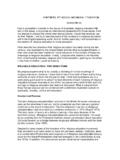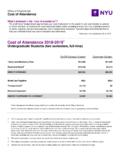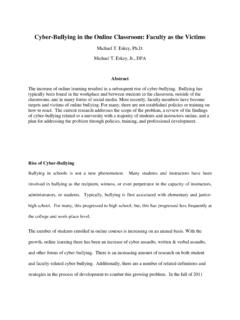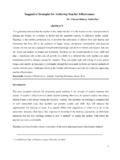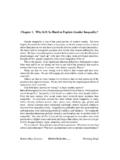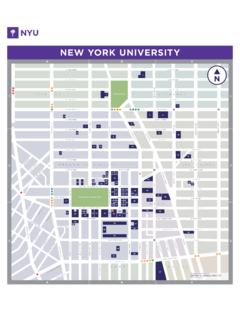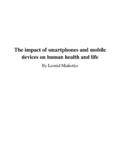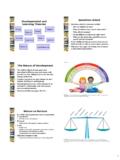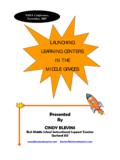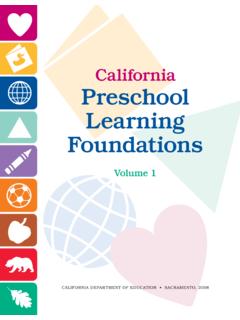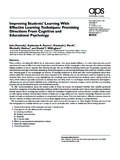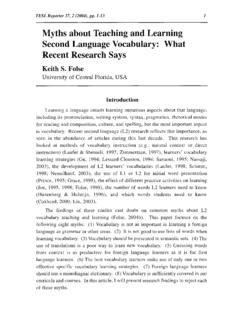Transcription of An Effective use of ICT for Education and Learning …
1 1 An Effective use of ICT for Education and Learning by Drawing on Worldwide Knowledge, Research, and Experience: ICT as a Change Agent for Education (A LITERATURE REVIEW) Syed Noor-Ul-Amin Research Scholar Department Of Education , University Of Kashmir The purpose of this paper aims to bring together the findings and key points from a review of significant part of the available literature associated with ICTs for Education and ICTs in Education . This review set out to identify and evaluate relevant strategies in national and international research and initiatives related to measuring and demonstrating the Effective use of ICT for Education with regard to the teaching Learning process; ICT and quality and accessibility of Education ; ICT and Learning motivation, ICT and Learning environment, and ICT to enhance the scholastic performance. Abstract: Information and communication technologies (ICT) have become commonplace entities in all aspects of life.
2 Across the past twenty years the use of ICT has fundamentally changed the practices and procedures of nearly all forms of endeavour within business and governance. Education is a very socially oriented activity and quality Education has traditionally been associated with strong teachers having high degrees of personal contact with learners. The use of ICT in Education lends itself to more student-centred Learning settings. But with the world moving rapidly into digital media and information, the role of ICT in Education is becoming more and more important and this importance will continue to grow and develop in the 21st century. In this paper, a literature review regarding the use of ICTs in Education was provided. Effective use of ICT for Education , along with ICT use in the teaching Learning process; quality and accessibility of Education ; Learning motivation.
3 Learning environment. Besides, an overview of the ICT and scholastic performance. Introduction According to Daniels (2002) ICTs have become within a very short time, one of the basic building blocks of modern society. Many countries now regard understanding ICT and mastering the basic skills and concepts of ICT as part of the core of Education , alongside reading, writing and numeracy. However, there appears to be a misconception that ICTs generally refers to computers and computing related activities . This is fortunately not the case, although computers and their application play a significant role in modern information management, other technologies and/or systems also comprise of the phenomenon that is commonly regarded as and Law (2003) state that near the end of the 1980s, the term computers was replaced by IT (information technology) signifying a shift of focus from computing technology to the capacity to store and retrieve information.
4 This was followed by the introduction of the term ICT (information and communication technology) around 1992, when e-mail started to become available to the general public (Pelgrum, , Law, N., 2003). According to a United Nations report (1999) ICTs cover Internet service provision, telecommunications equipment and services, information technology equipment and services, media and broadcasting, libraries and documentation centres, commercial information providers, network-based information services, 2 and other related information and communication activities. According to UNESCO (2002) information and communication technology (ICT) may be regarded as the combination of Informatics technology with other related technology, specifically communication technology. The various kinds of ICT products available and having relevance to Education , such as teleconferencing, email, audio conferencing, television lessons, radio broadcasts, interactive radio counselling, interactive voice response system, audiocassettes and CD ROMs etc have been used in Education for different purposes (Sharma, 2003; Sanyal, 2001; Bhattacharya and Sharma, 2007).
5 The field of Education has been affected by ICTs, which have undoubtedly affected teaching, Learning , and research (Yusuf, 2005). A great deal of research has proven the benefits to the quality of Education (Al-Ansari, 2006). ICTs have the potential to innovate, accelerate, enrich, and deepen skills, to motivate and engage students, to help relate school experience to work practices, create economic viability for tomorrow's workers, as well as strengthening teaching and helping schools change (Davis and Tearle, 1999; Lemke and Coughlin, 1998; cited by Yusuf, 2005).As Jhurree (2005) states, much has been said and reported about the impact of technology, especially computers, in Education . Initially computers were used to teach computer programming but the development of the microprocessor in the early 1970s saw the introduction of affordable microcomputers into schools at a rapid rate.
6 Computers and applications of technology became more pervasive in society which led to a concern about the need for computing skills in everyday life. Hepp, Hinostroza, Laval and Rehbein (2004) claim in their paper Technology in Schools: Education , ICT and the Knowledge Society that ICTs have been utilized in Education ever since their inception, but they have not always been massively present. Although at that time computers have not been fully integrated in the Learning of traditional subject matter, the commonly accepted rhetoric that Education systems would need to prepare citizens for lifelong Learning in an information society boosted interest in ICTs (Pelgrum, , Law, N., 2003). The 1990s was the decade of computer communications and information access, particularly with the popularity and accessibility of internet-based services such as electronic mail and the World Wide Web (WWW).
7 At the same time the CD-ROM became the standard for distributing packaged software (replacing the floppy disk). As a result educators became more focused on the use of the technology to improve student Learning as a rationale for investment. Any discussion about the use of computer systems in schools is built upon an understanding of the link between schools, Learning and computer technology. When the potential use of computers in schools was first mooted, the predominant conception was that students would be taught by computers (Mevarech & Light, 1992).In a sense it was considered that the computer would take over the teacher s job in much the same way as a robot computer may take over a welder s job. Collis (1989) refers to this as a rather grim image where a small child sits alone with a computer . However, the use of information and communication technologies in the educative process has been divided into two broad categories: ICTs for Education and ICTs in Education .
8 ICTs for Education refers to the development of information and communications technology specifically for teaching/ Learning purposes, while the ICTs in Education involves the adoption of general components of information and communication technologies in the teaching Learning process. 3 ICT enhancing teaching and Learning process The field of Education has been affected by ICTs, which have undoubtedly affected teaching, Learning and research (Yusuf, 2005) .ICTs have the potential to accelerate, enrich, and deepen skills, to motivate and engage students, to help relate school experience to work practices, create economic viability for tomorrow's workers, as well as strengthening teaching and helping schools change (Davis and Tearle, 1999; Lemke and Coughlin, 1998; cited by Yusuf, 2005). In a rapidly changing world, basic Education is essential for an individual be able to access and apply information.
9 Such ability must find include ICTs in the global village. Conventional teaching has emphasized content. For many years course have been written around textbooks. Teachers have taught through lectures and presentations interspersed with tutorials and Learning activities designed to consolidate and rehearse the content. Contemporary settings are now favouring curricula that promote competency and performance. Curricula are starting to emphasize capabilities and to be concerned more with how the information will be used than with what the information is. Contemporary ICTs are able to provide strong support for all these requirements and there are now many outstanding examples of world class settings for competency and performance-based curricula that make sound use of the affordances of these technologies (Oliver, 2000).
10 The integration of information and communication technologies can help revitalize teachers and students. This can help to improve and develop the quality of Education by providing curricular support in difficult subject areas. To achieve these objectives, teachers need to be involved in collaborative projects and development of intervention change strategies, which would include teaching partnerships with ICT as a tool. According to Zhao and Cziko (2001) three conditions are necessary for teachers to introduce ICT into their classrooms: teachers should believe in the effectiveness of technology, teachers should believe that the use of technology will not cause any disturbances, and finally teachers should believe that they have control over technology. However, research studies show that most teachers do not make use of the potential of ICT to contribute to the quality of Learning environments, although they value this potential quite significantly (Smeets, 2005).
